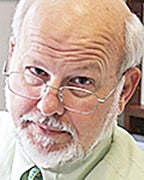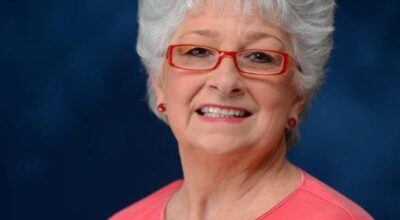Controlling the media is at odds with self-governance
Published 11:16 am Tuesday, November 29, 2016

- Charlie Mitchell
The most helpful journalism is fact-centered, verified and solution-oriented. The most profitable is not.
Understand that and “mass media” is explained.
It’s also important to remember that the purpose of the First Amendment was not protection of the establishment press, as loathed in 1789 as it is today.
The idea was that free speech would shield people from abuse by those in positions of power and authority. The idea was based on the belief that people, if left alone, would act in their own best interests, which would translate into the best interests of communities, states and the nation. Essential to this was free, robust exchanges. Progress would be the natural product of a marketplace of ideas.
It wasn’t perfect then. It isn’t perfect now.
Now, stepping off the soap box: Fake news? Regulate it? Ban it? Prosecute liars?
There has been a lot of conversation before and since Nov. 8 on the role of all forms of public communication in influencing public opinion.
President-elect Donald Trump has continued so say the networks and major newspapers work overtime to discredit him.
But he won. Doesn’t it say something about the reputed power of the press when the candidates reporters really like keep getting beat?
Hillary Clinton’s supporters have their gripes, too. They been vocal about the “free media” provided to Trump whose outrageous acts kept him at the forefront of news cycles during both the primary and general election seasons. Other candidates were in the shadows as Trump mimicked the disabled, mocked Gold Star parents — actions that should have brought condemnation and ruin to his campaign.
So why did Trump get all the coverage?
For the same reason people go to the circus.
Go back in time. Cliff Finch, Mississippi’s 57th governor, decided to run for president. The only two memorable aspects of his campaign are (1) that he drove an 18-wheeler to Washington, D.C., and (2) that he posed for photographs in a heart-shaped bathtub in a Las Vegas hotel.
Of course Finch didn’t get elected and Trump did. The point is to illustrate that the press can’t pass up bizarre behavior. Crafty politicians know it.
Now another bit of media history: Back when printed newspapers and pamphlets were the only formats for mass communication, almost all stories and cartoons were intensely partisan. Candidates were openly promoted. Their rivals were lampooned without mercy.
During that time, publishers derived most of their revenue from per-copy sales. It was only later, when advertising income started driving the bottom line, that newspapers started seeking balance — and it was to keep their advertisers happy, not readers.
Now a bit about today: In addition to the presumably professional, fact-checked reports provided by established media companies, there is social media where everyone is a journalist and anyone who attracts followers has an audience. Candidates love Twitter because it is (1) instant, (2) unfiltered and, perhaps most of all, (3) free.
The Washington Post reported Trump sent 6,000 tweets during the first 11 of his 16-month campaign, then he picked up the pace to as many as 60 a day. About 200 people heard Lincoln’s Gettysburg Address. Trump has 15.7 million followers on Twitter. Quite a different scale; quite a different potential impact.
Now to “fake news.”
Should it be illegal to knowingly create and deliver information that looks like news but is totally false?
Secretary of State Delbert Hosemann has been concerned about this. Suppose the morning of an election an official-looking message goes viral on the internet claiming that a candidate on the ballot has been arrested or died or has quit the race and is asking supporters to pick someone else? It could happen, and probably will. It could cause a candidate to lose. Legally, there is already civil accountability for such fabrications. Should there be more controls?
Lying and deception on a mass scale are faster and easier than ever before. Traditional media is more and more audience-driven, meaning intrigue, excitement, disgust and curiosity are elemental in reporting. There are fewer sources for “just the facts.”
But back to the beginning: Given the choice between government management of information and free, robust (and sometimes completely inaccurate) exchanges, the choice was made to trust that people, more often than not, would get it right.
We don’t need more controls or more laws or more punishments. In personal exchanges, we can usually tell when we are being informed and when we are being baited. We need to apply that same skepticism to media in all its forms and formats.
Charlie Mitchell is a Mississippi journalist. Write to him at cmitchell43@yahoo.com.





